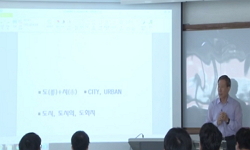본 연구의 목적은 도시개발의 영향을 평가하고 물순환 개선시설의 적절한 배치를 설계하기 위한 물순환 해석 모형을 개발하는 것이다. 개념적 매개변수를 사용하는 기존의 집중형 수문모형...
http://chineseinput.net/에서 pinyin(병음)방식으로 중국어를 변환할 수 있습니다.
변환된 중국어를 복사하여 사용하시면 됩니다.
- 中文 을 입력하시려면 zhongwen을 입력하시고 space를누르시면됩니다.
- 北京 을 입력하시려면 beijing을 입력하시고 space를 누르시면 됩니다.
https://www.riss.kr/link?id=A100473554
- 저자
- 발행기관
- 학술지명
- 권호사항
-
발행연도
2012
-
작성언어
Korean
- 주제어
-
KDC
321.33
-
등재정보
KCI등재
-
자료형태
학술저널
-
수록면
203-215(13쪽)
- 제공처
-
중단사유
※ 코리아스칼라의 원문 서비스 중단에 따라, 학술지명을 클릭하여 [복사/대출] 서비스를 이용해 주시기 바랍니다.
-
0
상세조회 -
0
다운로드
부가정보
국문 초록 (Abstract)
본 연구의 목적은 도시개발의 영향을 평가하고 물순환 개선시설의 적절한 배치를 설계하기 위한 물순환 해석 모형을 개발하는 것이다. 개념적 매개변수를 사용하는 기존의 집중형 수문모형으로는 도시개발로 인한 토지이용 변화 등의 유역 특성 변화를 적절히 모의하는데 한계가 있으며, 최근 활발히 연구되고 있는 분포형 수문모형은 입력자료 구축 및 모형구동에 많은 시간과 노력이 필요하여 다양한 도시설계 대안을 평가하기에는적절하지못하다. 유역 물순환 해석 모형(Catchment hydrologic cycle Analysis Tool, 이하 CAT)은 이러한 배경을 토대로 개발된 물리적 매개변수 기반의 링크-노드 방식의 물순환 정량화 모형이다. CAT은 기존 개념적 매개변수 기반의 집중형 수문모형과 물리적 매개변수 기반의 분포형 수문모형의 장단점을 최대한 보완하여, 도시유역 개발 전 후의 장 단기적인 물순환 변화 특성을 정량적으로 평가하고 물순환 개선시설의 효과적인 설계를 지원하기 위한 물순환 해석 모형이다. 개발된 모형의 평가를 위하여 설마천 유역을 대상으로 모의를 수행하였으며 출구점인 전적비교의 6개년(2002~2007) 동안의 시간별 하천 유출량 자료를 이용하여 모형의 보정(2002~2004)과 검정(2005~2007)을 실시한 결과, 보정과 검정기간의 Nash-Sutcliffe 모형효율계수는 각각 0.75와 0.89로 나타났다.
다국어 초록 (Multilingual Abstract)
The objective of this study is to develop a catchment hydrologic cycle assessment model which can assess the impact of urban development and designing water cycle improvement facilities. Developed model might contribute to minimize the damage caused b...
The objective of this study is to develop a catchment hydrologic cycle assessment model which can assess the impact of urban development and designing water cycle improvement facilities. Developed model might contribute to minimize the damage caused by urban development and to establish sustainable urban environments. The existing conceptual lumped models have a potential limitation in their capacity to simulate the hydrologic impacts of land use changes and assess diverse urban design. The distributed physics-based models under active study are data demanding; and much time is required to gather and check input data; and the cost of setting up a simulation and computational demand are required. The Catchment Hydrologic Cycle Assessment Tool (hereinafter the CAT) is a water cycle analysis model based on physical parameters and it has a link-node model structure. The CAT model can assess the characteristics of the short/long-term changes in water cycles before and after urbanization in the catchment. It supports the effective design of water cycle improvement facilities by supplementing the strengths and weaknesses of existing conceptual parameter-based lumped hydrologic models and physical parameterbased distributed hydrologic models. the model was applied to Seolma-cheon catchment, also calibrated and validated using 6 years (2002~2007) hourly streamflow data in Jeonjeokbigyo station, and the Nash-Sutcliffe model efficiencies were 0.75 (2002~2004) and 0.89 (2005~2007).
동일학술지(권/호) 다른 논문
-
- 한국수자원학회
- 이종석,Julien, P. Y.,김재훈,이태우
- 2012
- KCI등재
-
- 한국수자원학회
- 홍일,강준구,여홍구
- 2012
- KCI등재
-
- 한국수자원학회
- 정상화,장지연,최성욱
- 2012
- KCI등재
-
- 한국수자원학회
- 최성욱,최성욱
- 2012
- KCI등재





 코리아스칼라
코리아스칼라





